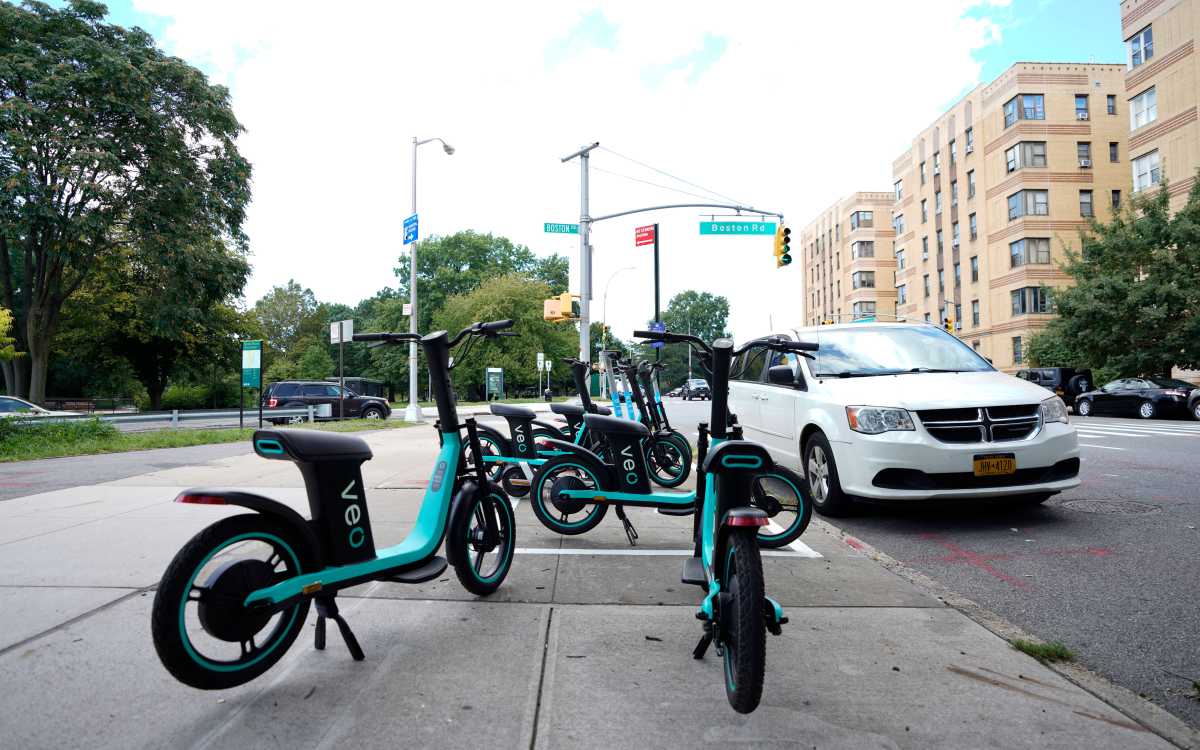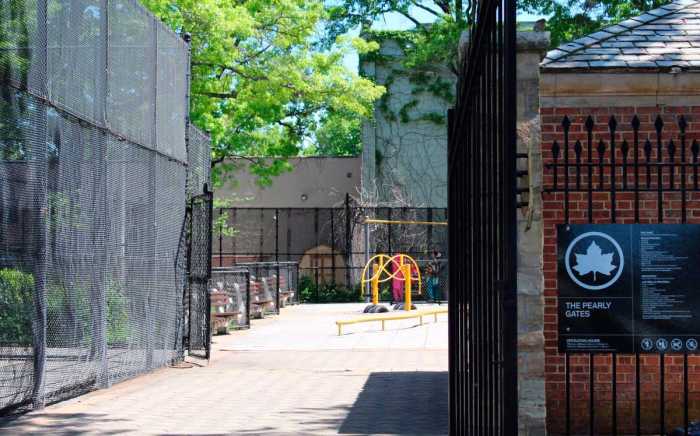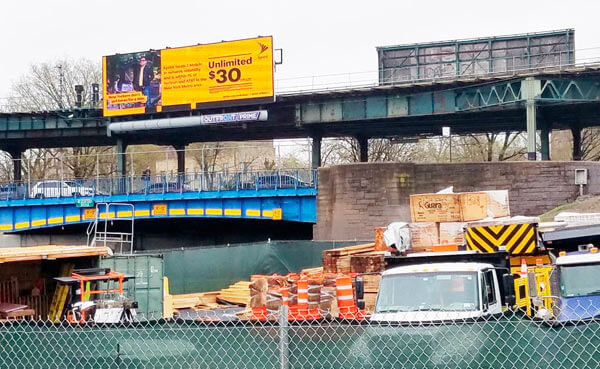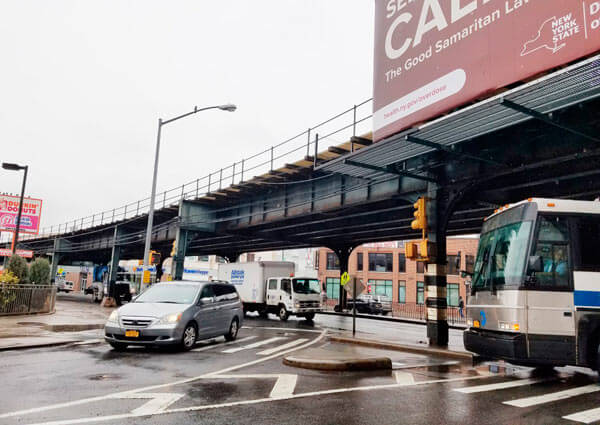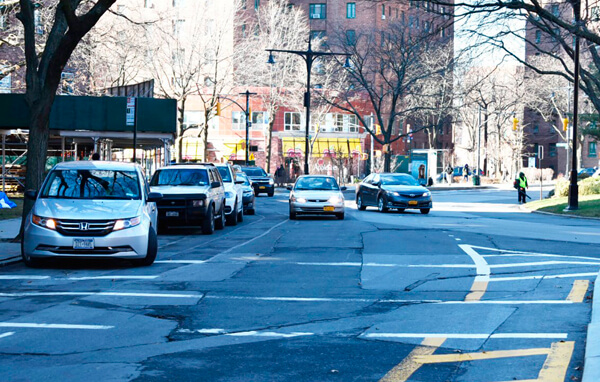After the NYC Department of Transportation’s assessment of the East Bronx’s e-scooter pilot program, which first launched in August 2021, found zero fatalities after more than 1.4 million rides, the program could soon be a permanent transportation alternative for the transit-starved Bronx corridor.
On Monday, DOT Commissioner Ydanis Rodriguez announced that the city is seeking Requests for Proposals (RFP) for new companies to enter a potential expansion of NYC’s e-scooter market and also expressed a desire to make the East Bronx’s e-scooter program, which runs through the summer of 2023, permanent.
“We are announcing today that the shared e-scooter pilot I supported as a Councilmember will aim to become a long-term program, pending the results of DOT’s RFP,” said Rodriguez. “On the streets of the East Bronx, this pilot met and exceeded its ambitious goals around safety, mobility, and equity. And now we are ready to do even more for more communities.”
If the DOT expands its e-scooter program, future target neighborhoods will be based on the RFP responses — as well as on land use requirements, existing transportation infrastructure and community input, the DOT says.
The purpose of the pilot program, according to DOT, was to test the viability of shared e-scooters in New York City neighborhoods that were left unserved by Citi Bike, the city’s bike share system that is predominantly stationed in Manhattan. E-scooter operators Lime, Bird and Veo all took part in the Bronx-specific pilot.
In June, 10 months after the City Council-backed program launched, DOT expanded the initial pilot further south in the East Bronx, doubling the number of e-scooters and adding nine new neighborhoods to the pilot area. The combined pilot area covered nearly 600,000 New Yorkers — and brought up to 6,000 scooters in total to the borough — more than 80% of whom were non-white and included 25 NYCHA developments.
The DOT found that e-scooter ridership was high on commercial corridors and near MTA transit hubs, including subway stations and bus and ferry stops, a sign that the program is increasing accessibility to NYC’s subway lines into Manhattan. However, anecdotally, reception of the program has been mixed.
While some residents from Wakefield to Soundview, the stretches of the pilot zones, enjoy a lower-emissions transportation alternative that can cut travel times throughout the spacious borough and to Manhattan by a few transfers and minutes, others have lamented the lack of proper care of e-scooters, including incidents of drivers having discarded e-scooters in heavily trafficked intersections like Morris Park Avenue and White Plains Road.
Bird — one of the companies participating in the pilot — used Google technology to up the enforcement on improperly parked scooters. In certain areas of the pilot, DOT mandated all e-scooter rides to end at parking corrals, about 130 in total.
When the program launched, DOT implemented strict safety measures including mandatory age verification and a “beginner mode” for new riders – who were required to take a safety quiz, travel at slower speeds and could not take initial rides overnight.
E-scooters, however, are struggling to find traction in other municipalities, as well as facing dire financial outlooks and evergreen safety concerns.
A new U.S. Consumer Product Safety Commission report found e-scooter, e-bike and hoverboard injuries and deaths are rising across the U.S, and that 68 of the 129 reported micromobility deaths in the U.S. from 2017-2021, were from e-scooter fatalities.
Motor vehicle accident and user-control issues were top hazards outlined in e-scooter fatalities.
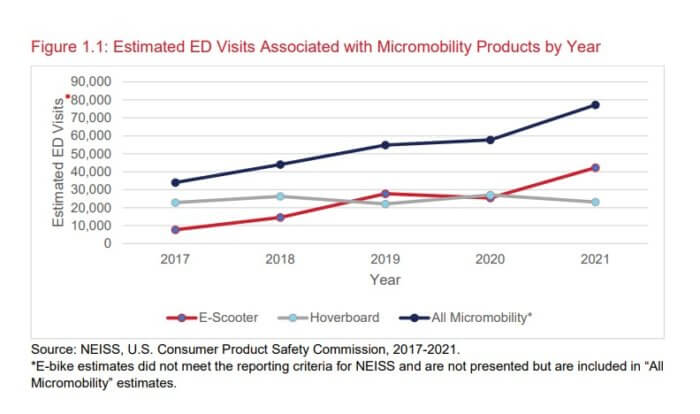
The report estimates a total of 117,600 emergency room visits due to e-scooter incidents nationwide over that same timeframe (2017-2021), and that rental e-scooters accounted for 44% of the e-scooter-related emergency room visits. According to the data, 21% reported that it was dark or difficult to see and 26% were carrying or holding something while riding the device.
After a fire ripped through a Midtown East high-rise sending 43 people to the hospital, city officials pointed to the cause of the fire — a e-bike left charging by one of the resident’s front door’s — as a cause to crack down on the sale of certain types of lithium ion batteries, which are used in e-scooters.
Overseas, the city of Paris is considering banning its 15,000 rental electric scooters due to concerns about public safety on the city’s sidewalks, as operators propose a series of improvements in the hope of getting their licences renewed. The licenses of the three operators — Lime, Dott and Tier — expire in February 2023.
Bird — who improperly counted preloaded “wallet” balances as revenue after the completion of certain scooter trips in its financial reports for 2020 and 2021 — faces a tough financial future.
Bird’s audit committee found on Friday that the company’s financial reports spanning the first quarter of 2020 through the second quarter of 2022 “should no longer be relied upon,” according to a U.S. Securities and Exchange Commission filing.
Reach Robbie Sequeira at rsequeira@schnepsmedia.com or (718) 260-4599. For more coverage, follow us on Twitter, Facebook and Instagram @bronxtimes

